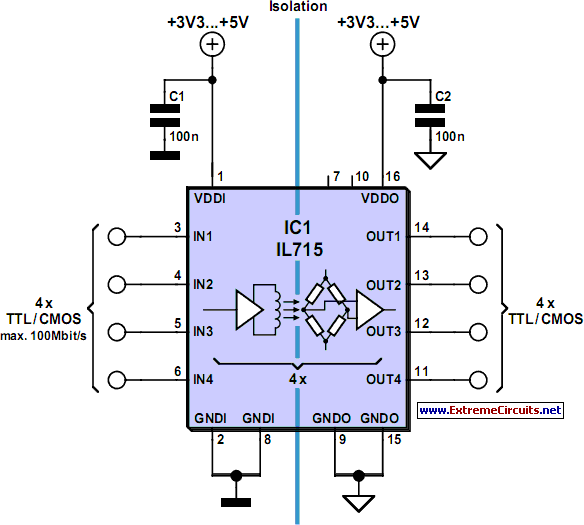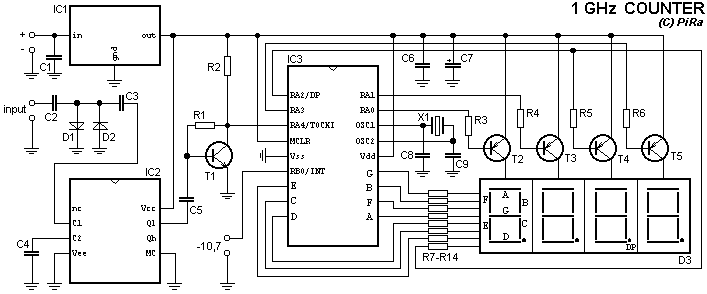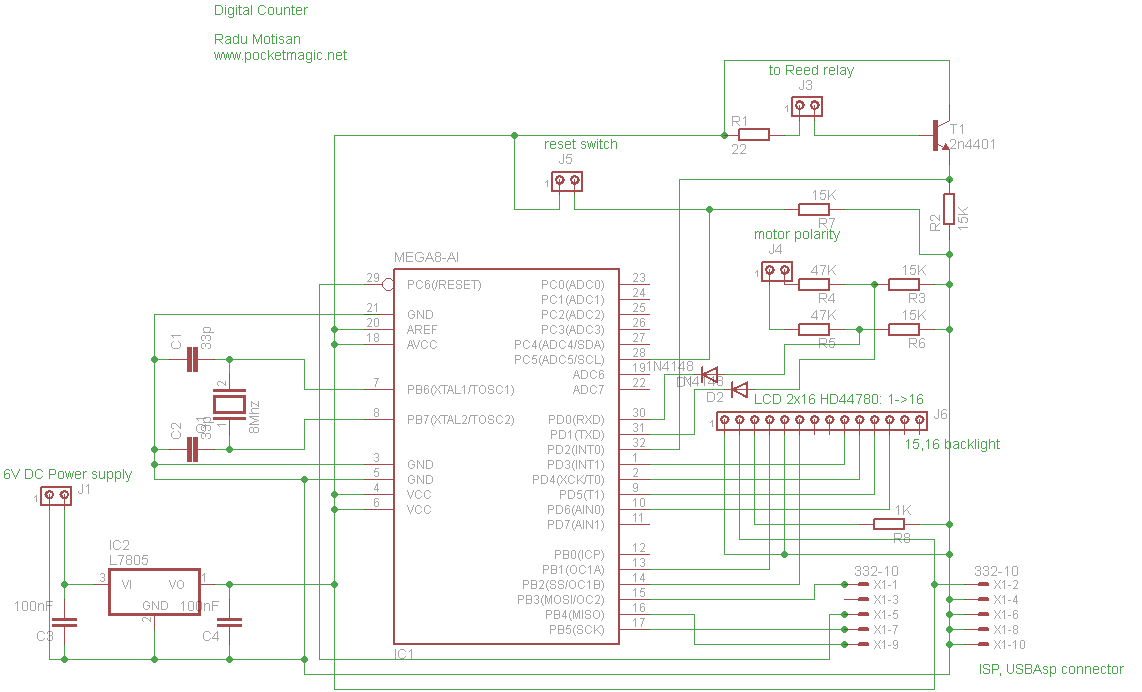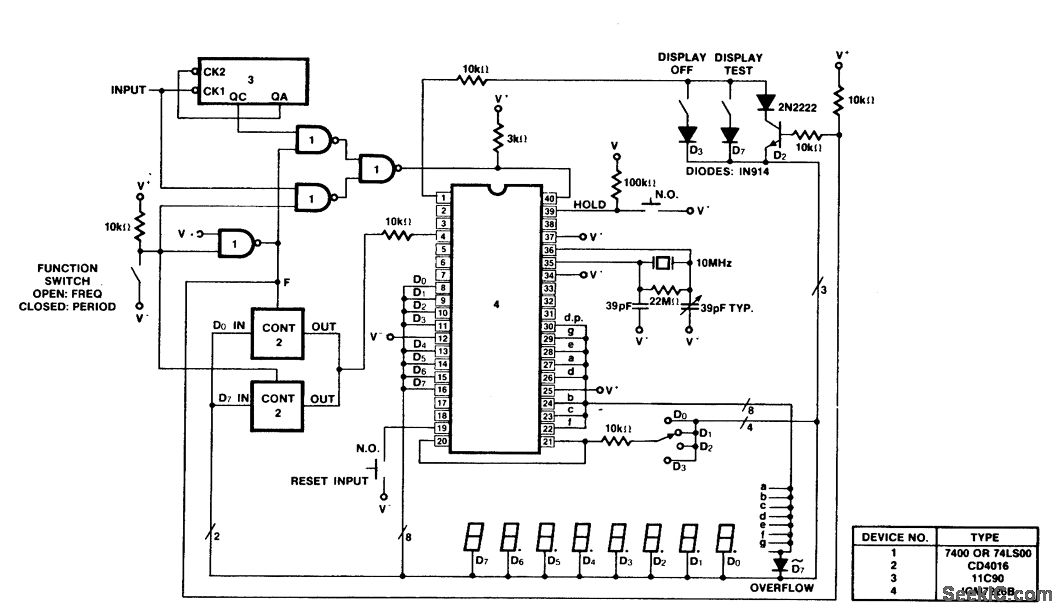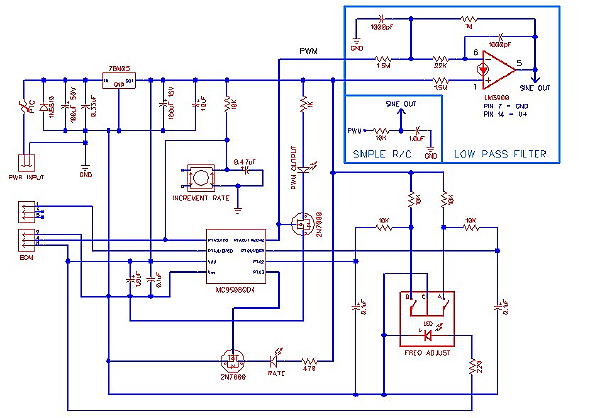
Digital Step-Km Counter
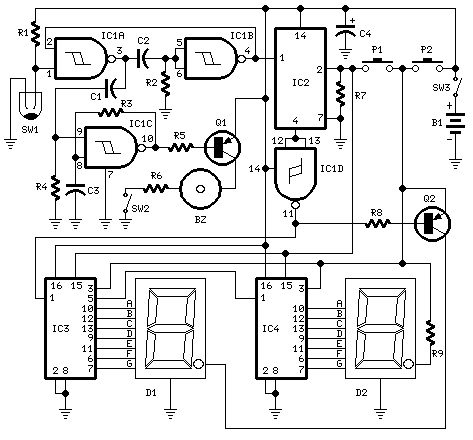
Digital step-kilometer counter with a maximum range of 9,950 meters, displayed using two digits. The device can be conveniently placed in a pants pocket for use during walking and jogging activities. Circuit components include resistors R1 and R3, each rated at 22K ohms and 1/4 watt.
The digital step-kilometer counter is designed to accurately measure and display the distance traveled in meters. The core of the circuit typically consists of a microcontroller or a digital counter IC, which processes input from a step detection mechanism, such as a piezoelectric sensor or a simple mechanical switch activated by footfalls.
The resistors R1 and R3, both rated at 22K ohms, are used for biasing and setting thresholds within the circuit. They may be part of a voltage divider network that helps in conditioning the signal from the step detection mechanism before it is fed into the microcontroller. The power supply for the circuit can be sourced from a small battery, ensuring portability and ease of use.
The output display is likely a two-digit seven-segment LED or LCD display, which shows the distance in meters. The microcontroller processes the input signal and increments the displayed value based on the number of steps detected, converting this into a distance calculation based on a predetermined step length.
To enhance usability, the device may include additional features such as a reset button to clear the distance counter, and possibly a mode switch to toggle between different measurement units or settings. The compact design allows for easy carrying in a pocket, making it an ideal companion for fitness enthusiasts engaged in walking or jogging activities.
Overall, this digital step-kilometer counter combines simplicity with functionality, providing users with a reliable method to track their distance traveled during physical activities.Digital Step-Km Counter. Max. range: 9,950 meters with two digits. Slip it in pants` pocket for walking and jogging. Circuit diagram: Parts: R1,R3 22K 1/4W. 🔗 External reference
The digital step-kilometer counter is designed to accurately measure and display the distance traveled in meters. The core of the circuit typically consists of a microcontroller or a digital counter IC, which processes input from a step detection mechanism, such as a piezoelectric sensor or a simple mechanical switch activated by footfalls.
The resistors R1 and R3, both rated at 22K ohms, are used for biasing and setting thresholds within the circuit. They may be part of a voltage divider network that helps in conditioning the signal from the step detection mechanism before it is fed into the microcontroller. The power supply for the circuit can be sourced from a small battery, ensuring portability and ease of use.
The output display is likely a two-digit seven-segment LED or LCD display, which shows the distance in meters. The microcontroller processes the input signal and increments the displayed value based on the number of steps detected, converting this into a distance calculation based on a predetermined step length.
To enhance usability, the device may include additional features such as a reset button to clear the distance counter, and possibly a mode switch to toggle between different measurement units or settings. The compact design allows for easy carrying in a pocket, making it an ideal companion for fitness enthusiasts engaged in walking or jogging activities.
Overall, this digital step-kilometer counter combines simplicity with functionality, providing users with a reliable method to track their distance traveled during physical activities.Digital Step-Km Counter. Max. range: 9,950 meters with two digits. Slip it in pants` pocket for walking and jogging. Circuit diagram: Parts: R1,R3 22K 1/4W. 🔗 External reference
Warning: include(partials/cookie-banner.php): Failed to open stream: Permission denied in /var/www/html/nextgr/view-circuit.php on line 713
Warning: include(): Failed opening 'partials/cookie-banner.php' for inclusion (include_path='.:/usr/share/php') in /var/www/html/nextgr/view-circuit.php on line 713
